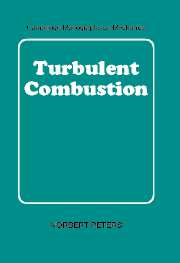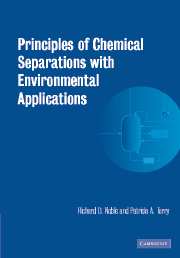Refine search
Actions for selected content:
5486 results in Thermal-fluids engineering
12 - Stability of Liquid Streams
-
- Book:
- Fluid Dynamics and Transport of Droplets and Sprays
- Published online:
- 05 June 2012
- Print publication:
- 11 January 2010, pp 361-408
-
- Chapter
- Export citation
10 - Spray Interactions with Turbulence and Vortical Structures
-
- Book:
- Fluid Dynamics and Transport of Droplets and Sprays
- Published online:
- 05 June 2012
- Print publication:
- 11 January 2010, pp 314-339
-
- Chapter
- Export citation
Nomenclature
-
- Book:
- Fluid Dynamics and Transport of Droplets and Sprays
- Published online:
- 05 June 2012
- Print publication:
- 11 January 2010, pp xiv-xviii
-
- Chapter
- Export citation
5 - Droplet Behavior under Near-Critical, Transcritical, and Supercritical Conditions
-
- Book:
- Fluid Dynamics and Transport of Droplets and Sprays
- Published online:
- 05 June 2012
- Print publication:
- 11 January 2010, pp 134-149
-
- Chapter
- Export citation
Index
-
- Book:
- Fluid Dynamics and Transport of Droplets and Sprays
- Published online:
- 05 June 2012
- Print publication:
- 11 January 2010, pp 460-462
-
- Chapter
- Export citation
Bibliography
-
- Book:
- Fluid Dynamics and Transport of Droplets and Sprays
- Published online:
- 05 June 2012
- Print publication:
- 11 January 2010, pp 427-459
-
- Chapter
- Export citation
8 - Computational Issues
-
- Book:
- Fluid Dynamics and Transport of Droplets and Sprays
- Published online:
- 05 June 2012
- Print publication:
- 11 January 2010, pp 237-284
-
- Chapter
- Export citation
1 - Introduction
-
- Book:
- Fluid Dynamics and Transport of Droplets and Sprays
- Published online:
- 05 June 2012
- Print publication:
- 11 January 2010, pp 1-7
-
- Chapter
- Export citation
6 - Droplet Arrays and Groups
-
- Book:
- Fluid Dynamics and Transport of Droplets and Sprays
- Published online:
- 05 June 2012
- Print publication:
- 11 January 2010, pp 150-198
-
- Chapter
- Export citation
Appendix A - The Field Equations
-
- Book:
- Fluid Dynamics and Transport of Droplets and Sprays
- Published online:
- 05 June 2012
- Print publication:
- 11 January 2010, pp 409-414
-
- Chapter
- Export citation
11 - Film Vaporization
-
- Book:
- Fluid Dynamics and Transport of Droplets and Sprays
- Published online:
- 05 June 2012
- Print publication:
- 11 January 2010, pp 340-360
-
- Chapter
- Export citation
3 - Convective Droplet Vaporization, Heating, and Acceleration
-
- Book:
- Fluid Dynamics and Transport of Droplets and Sprays
- Published online:
- 05 June 2012
- Print publication:
- 11 January 2010, pp 30-89
-
- Chapter
- Export citation
Appendix C - Droplet-Model Summary
-
- Book:
- Fluid Dynamics and Transport of Droplets and Sprays
- Published online:
- 05 June 2012
- Print publication:
- 11 January 2010, pp 422-426
-
- Chapter
- Export citation
7 - Spray Equations
-
- Book:
- Fluid Dynamics and Transport of Droplets and Sprays
- Published online:
- 05 June 2012
- Print publication:
- 11 January 2010, pp 199-236
-
- Chapter
- Export citation

Two-Phase Flow, Boiling, and Condensation
- In Conventional and Miniature Systems
-
- Published online:
- 09 January 2010
- Print publication:
- 22 October 2007
-
- Book
- Export citation

Implicit Large Eddy Simulation
- Computing Turbulent Fluid Dynamics
-
- Published online:
- 08 January 2010
- Print publication:
- 30 July 2007

Turbulent Combustion
-
- Published online:
- 06 January 2010
- Print publication:
- 15 August 2000

Statistical Thermodynamics and Microscale Thermophysics
-
- Published online:
- 06 January 2010
- Print publication:
- 13 August 1999

Principles of Chemical Separations with Environmental Applications
-
- Published online:
- 26 December 2009
- Print publication:
- 25 March 2004

Flow Control
- Passive, Active, and Reactive Flow Management
-
- Published online:
- 23 December 2009
- Print publication:
- 15 August 2000
